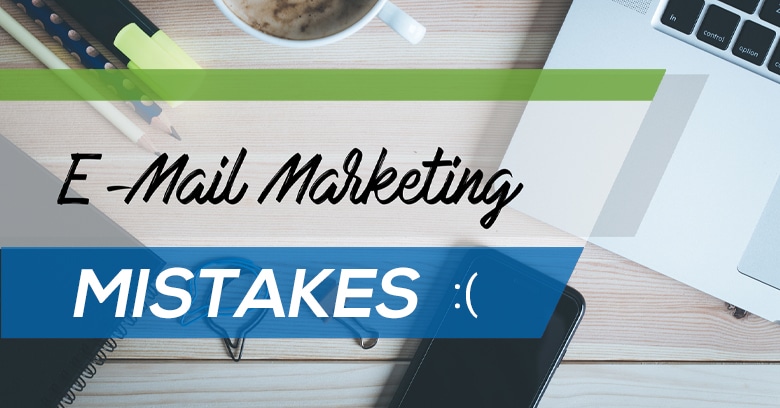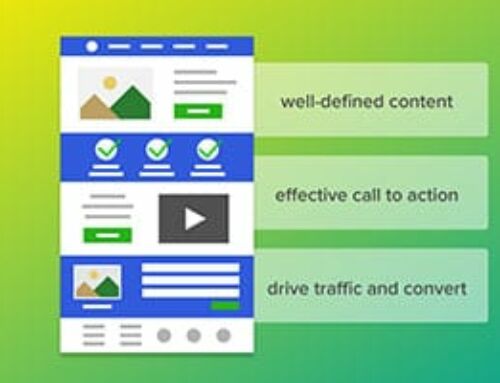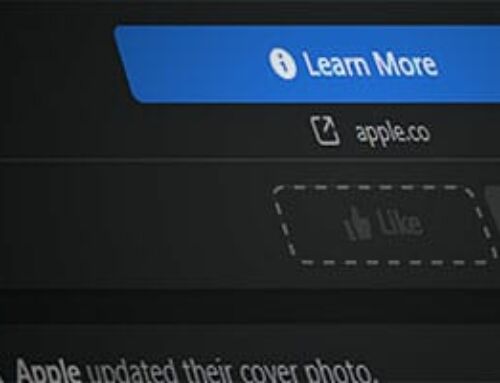
Email marketing is a powerful tool for marketers, but only if you are doing it correctly. Unfortunately, we see companies making common email marketing mistakes which can cost them leads and conversions. Even if you have figured out the email marketing game, circumstances for marketing campaigns are constantly changing and you may not even realize you’ve started making email marketing mistakes.
- Not Abiding by the latest GDPR Regulation
Back in May 2018, companies operating in the European Union (EU) and others who operate outside the EU, but may still operate on the market, must abide by a new set of rules regarding collecting, storing, and using data of users and clients. You can find out more specific information about these rules and regulations here.
- Not Creating the Right Expectations
When you begin collecting email addresses for your email campaign, you need to make sure you set up the right expectations. Subscribers want to know when to expect your emails and what kind of content they should expect. If someone signs up for a “free download” offer, this does not mean you can add them to your email marketing campaigns. Ensure you have let your consumers know what they are signing up for when they are plugging in their contact info.
- Skipping the Proper Preparation
When you decide to pursue a new email campaign, you have to have s strategy behind your email campaigns. Consider a few questions before really getting started:
- How can you benefit from email marketing?
- How will your consumers benefit from your email campaigns?
- What type of content do you plan to produce?
- How often will you send out materials?
Planning and deciding the details of your email campaign strategy will help create your vision and stay focused on the right kind of content.
- Not Setting Individual Goals for each Email
Sure, there is a general goal for all email marketing—bring in leads and turn those leads into conversions. With each individual email newsletter, you need to set a goal even if it’s just a basic “What do we want our customers to learn” type of goal. Setting a specific goal for each specific campaign will help boost your success.
- Skipping Opportunities to Target Specific Audiences
When you’re first starting out with a new email campaign, you may not have enough of an audience to worry about segmenting. Yet as your company grows and your campaign starts to gain traction and subscribers, you may find it worthwhile to target audiences based on demographics, purchase patterns, stages of the marketing-sales cycle, and more.
- Not Sending Relevant Content
If you’ve segmented your list, you want to make sure you aren’t just sending one general email newsletter to all your subscribers. Send relevant content to the groups of people by setting up your audiences/subscribers in categorized groups. If you’re selling clothes, send information about “men’s clothes” to the males on your list, etc. Your emails become more relevant the more personalized they are. As a result, your conversion rate should grow accordingly!
- Writing Poor Subject Lines
The subject line is a major factor when it comes to generating email open rates. Depending on how you’ve drafted your subject line, it will either catch your recipient’s attention or it could lead you directly to their trash folder.
Unfortunately, there isn’t a recipe that works for every brand. There are a few rules you can consider:
- Don’t mislead the recipient
- Don’t tell them everything
- Use those keywords right at the beginning!
- Annoying your Recipients with Too Many Messages
Even if consumers are excited and interested in the materials you share, if you send more emails than an obsessive girlfriend or ex-boyfriend, you may find yourself in the junk folder or even worse on the unsubscribed list. This tip goes hand in hand setting your goals for each email campaign. We know your goal isn’t to annoy you, subscribers, so make sure your campaigns provide value and you spread them out enough to where you don’t seem “spammy.”
- Forgetting to Brand
It is perfectly normal to use a template-based service like MailChimp to run your campaign and monitor your campaign performances; however, be sure to add your logos and brand info. You can even ensure your colors match your brand.
- Sending a Non-Responsive Email Design
If you’ve been following Momentum3 Growth for a while, you know we are always preaching about responsive design websites. The same strategy needs to be applied to your email design. When it’s time to open an email on mobile devices, where let’s face it, most people view their emails on their phones…you want to make sure the design is easily viewable on their device.
- Too Much Going On
Remember when we talked about having a goal for each campaign/email? Without a goal, you may find yourself getting carried away with content and including too much information in a single email. Keep your email newsletters focused, remember your goal, and leave out the distractions and fluff.
- Not Using Anchor Texts
A best practice for content, in general, is to avoid using a plain URL in your content. Using anchor texts, which is embedding hyperlink within your content, that are meaningful and flow in your text instead of generic phrases like “Click here for x,” you can say “Download this freebie” or “Browse our new collection” to introduce links to your viewers.
- Forgetting to ALT-Tag your Images
Have you ever opened an email and the images didn’t load? Whether that be because the user has turned them off or the email service provider has settings that prevent the email from displaying appropriately. Either way, you want to make sure alt-tags are used for your images. Use meaningful text so a user can decide if they want to click even if they can’t see the image without moving onto the website.
- Unclear Call(s)-to-Action
We aren’t just talking about the text you put on the buttons, but the text right before that. A call-to-action button is effective only if it’s consistent with the copy of the headings and the paragraphs. You must make sure to:
- Grab the attention with the heading’s copy
- Increase the interest with the paragraph’s copy
- Inspire action with your button copy
- Not Using Your Footer Appropriately
Including unnecessary information in the email footer is as bad as not including any info at all. Make sure you include the following:
- An unsubscribe option that doesn’t require the user to log in
- A link to your privacy policy with the proper GDPR regulation (See #1)
- Social media buttons to make it easier for users to find you on social platforms
- Any other disclaimers necessary for the content included (for example: if you are running a contest, be sure to include any necessary information for the participants)
Email Marketing Tip Wrap-Up
Email marketing mistakes are common. We aren’t perfect and have found ourselves making some of these rookie mistakes too, but after experimenting with what works and what doesn’t, we’re confident in our ability to turn your email marketing campaign into a real success. Reach out to us for more information about email marketing and how we can help you succeed!




